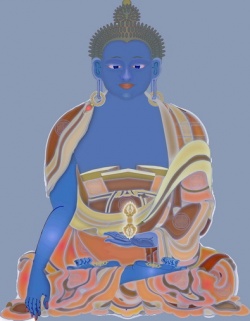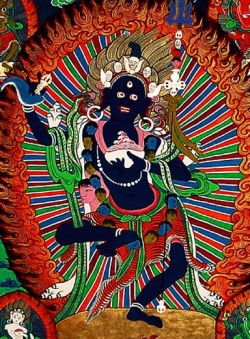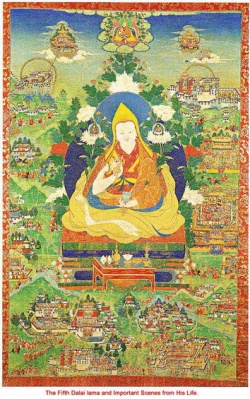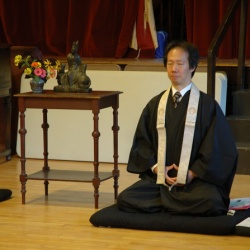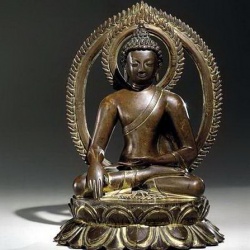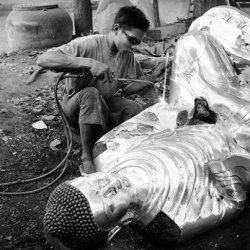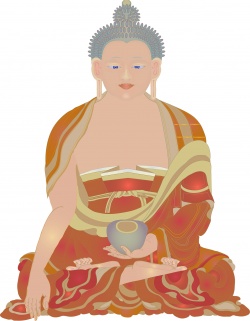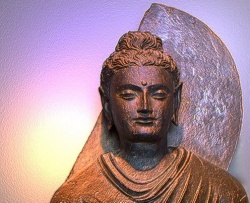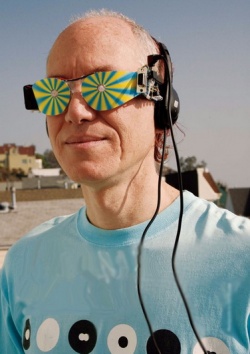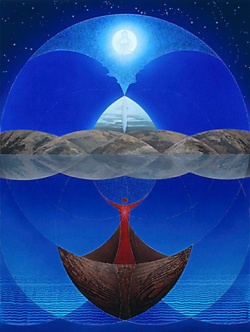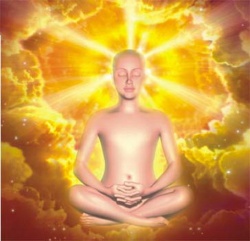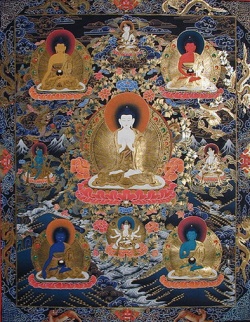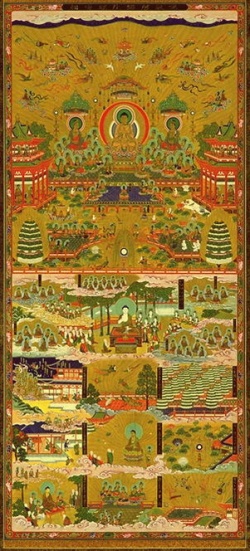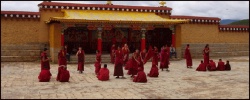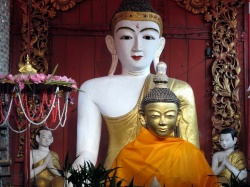The Teachings of Atmananda and the Direct Path
by Greg Goode
Introduction
Sri Atmananda (Krishna Menon) was a teacher whose teachings flow from the fountain of nondual wisdom known as Advaita Vedanta. He lived in Kerala, South India from 1883 to 1959. This was in the same modern era shared by Ramana Maharshi (1879-1950) and Nisargadatta Maharaj (1897-1981). Like Ramana and Nisargadatta, Atmananda inspired Easterners and Westerners. And like Ramana and Nisargadatta, Atmananda even has a giant book of insightful dialogues rich enough to be contemplated for years, which has the ability to help establish one as nondual awareness.
Sri Atmananda is much less well known than Ramana or Nisargadatta. As I write this paragraph, there isn't a Wikipedia entry on Atmananda, and there are relatively few published books either by him or about him. Yet, speaking for myself, I resonated more quickly and solidly with Atmananda's teachings than with Ramana's or Nisargadatta's. Atmananda uses concepts very well suited to a modern Westerner accustomed to logical or scientific discourse - concepts that seem simple and intuitive, and yet when examined, totally dissolve under scrutiny. This feeling of having the rug pulled out from under one is part of the experiential teaching that has direct and tangible effects as one proceeds with it.
Atmananda has had well known students, some of whom became teachers in their own right. Examples include John Levy, Jean Klein, Wolter Keers, and Paul Brunton. My own association with the teaching comes through the Jean Klein branch via Francis Lucille. Francis gave me a copy of ATMA DARSHAN one day, and I read it with the attention and respect I felt went along with such a gift. This short book resolved in a wondrous flash a subtle question I had been contemplating for several years about the difference between subject and object. Here in ATMA DARSHAN were several sections devoted to the exact issue I had been pursuing, issues I had never seen touched upon in the hundreds of other books on Advaita or Western philosophy I had read.
Like Berkeley but Global
There's something else too in my case. When one first encounters Atmananda's teachings, they can seem similar to the Western philosophy of Idealism, especially as taught by George Berkeley (1685-1753). It just so happened that I had been seriously studying Berkeley's teachings and before him, Brand Blanshard's (1892-1987) teachings as part of my own academic training in Philosophy. This had been going on for 25 years before I encountered Atmananda's teachings, during which time "physical" objects had lost their associated feelings of hardness, opacity, heaviness and brute physicality. I experienced physical objects as ideational.
And this is very very similar to the way that Atmananda first approaches his teaching. He starts by having you contemplate a physical object and acknowledge that it can be 100% accounted for by visual, tactile, auditory and intellectual "forms." And that apart from, say, a visual form that arises only as something in knowledge, it makes no sense to think that we "see" an object. We simply never experience anything "of" an independent object other than this form. So we have no way to establish that this form is "of" the object. We have no experience that there's an object independent of this form.
My Berkeley teacher gave me lots of hints that Berkeley was actually a nondualist; but to actually find this element in Berkeley's works, one must cultivate the skill of esoteric and hermeneutic reading. On the surface level at least, Berkeley wrote as a bishop in the Church of Ireland; he had to write as though human minds and the conventional figure of God are well and good, separate and intact. But writing in a different culture in the middle of the 20th century, Sri Atmananda didn't have to worry about persecution by religous orthodoxy. His investigation goes very directly and openly to the core of being. Atmananda applies the same sort of scrutiny to the sense modalities, to the body and to the mind. We simply never witness anything external to witnessing awareness. There is no evidence for a limitation to seeing, or a gap between subject and object. There is also no evidence that awareness is personal, separate, limited or compartmentalized. And so nothing is missing.
How much further? All the way!
This awareness is our very self, since we don't stand apart from it and see it. It is our very seeing itself, as us. It is not separate or personal. It is clarity and openness. As Knowledge, it never feels that anything is missing. As Love, it is always accepting to everything that arises, never prohibiting or saying No to anything. As Happiness, it never suffers.
ATMA DARSHAN and ATMA NIRVRITI
ATMA DARSHAN is the more fundamental and poetic of the two works. It lays out the kernel of Shri Atmananda's unique method, which could be called the "outside-in" approach. Instead of expanding the individual so as to become universal, ATMA DARSHAN shows how the universal is always the sum and substance of the individual. Specifically, it shows quite clearly just how everything that seems to be outside oneself (i.e. world, body and mind) is actually inseparable from oneself as pure awareness.
ATMA NIRVRITI can be seen as answering questions that might have occurred to the reader of ATMA DARSHAN. Questions may arise such as how there can be seeing without a seer or indeed without an actual object that is seen, or how knowledge of your nature is different from everyday factual knowledge. ATMA NIRVRITI clarifies the issues in ATMA DARSHAN from different angles of vision, and in places from a higher level. In addition, ATMA NIRVRITI has three articles as appendices, "I," "Witness," and "World" which are extremely helpful in understanding how these concepts are regarded by this unique teaching.
It has been many years since Advaita Publishers last reprinted these two great works, which carry a copyright date of 1983. With available copies having gravitated into the rare and out-of-print book markets, I had created a PDF file of the combined edition of ATMA DARSHAN and ATMA NIRVRITI, which could be downloaded from this site. Recently, Advaita Publishers wrote informing me that the books are still under copyright. Out of respect for this legal issue as well as respect for the heirs of Sri Atmananda, I have removed the downloadable PDF file from this site. The publisher wishes me to make known that any copies that have been downloaded from this site are similarly in violation of Sri Atmananda's heirs' rights of copyright.
If you wish to obtain these books, you can try the rare and out-of-print market. AbeBooks.com and Amazon.com carry copies occasionally. But I am sure that you will join me in wishing that Advaita Publishers reprints these two classic works sometime soon.
Notes on Spiritual Discourses of Shri Atmananda
NOTES ON SPIRITUAL DISCOURSES
This is it, Shri Atmananda's big book, 517 pages in length! It is a collection of dialogues compiled from Nitya Tripta's notes kept over the ten year period from 1950 to 1959, plus a biography and collection of spiritual statements from Atmananda. This is a new, digitally remastered PDF file, with searchable text and a linked PDF table of contents and index.
In its scope and depth, this great work can be compared to Ramana Maharshi's Talks and Nisargadatta's I AM THAT. It has been compiled in a similar format - Q & A items on a wide variety of topics approached from different angles, with a topical and chronological table of contents.
This volume has never been for sale or been under copyright. In fact, for many years it was photocopied and passed around privately among Shri Atmananda's direct students and later generations of those inquiring into truth.
To download, right-click the link and select Save Target As (in IE) or Save Link As (FireFox). Then save to your local PC or Mac. Any problems opening the file, try downloading the newest version of Adobe Acrobat Reader from the Adobe.com website. Get Acrobat Reader (PC version). Get Acrobat Reader (Mac and other versions).
"Inquiry Via the Direct Path" (audio interview with Greg Goode on the teachings of Shri Atmananda, 47 min)
Features of the Direct Path
According to the direct path, suffering is based on taking things as real or independent, whereas they arise in thought only. I call this kind of “taking” a sense of inherent existence. The direct path is a way of following one’s direct experience to test whether the claims of inherent existence are confirmed. It is practical, not theoretical. It is like a treasure hunt – like looking for the greatest treasure in the world.
The process in a nutshell goes like this:
We notice that the world, body and mind seem as though they are really there, and really separate, limited and vulnerable. We ask, is this confirmed by experience?
We follow our direct experience, finding that the answer is No!
Dualisms evaporate in the discovery that everything is awareness, that is, happiness; that is, experience itself.
This awareness is clear, open, and loving, and is the reality of our experience at every moment. It is happiness. The direct path is complete from “beginning” to “end,” and is found by many people to be very intuitive for modern times. Basically, it
Requires no need for expertise in meditation
Involves both understanding and heart
Has been tested by experience; there is no belief required
Sees through creation stories
Dissolves issues about doership
Involves the body in a holistic way
It is modern and incisive in style
It transforms one’s attitude towards language, perception, thought, others, and the world
Gets past common sticking points
Suffering and Freedom
In more detail, suffering is caused by believing that our experience is characterized by objectively real objects, dualisms and distinctions, such as
I / Not I
Freedom / Bondage
Nirvana / Samsara
Physical / Spiritual
Appearance / Reality
Good / Evil
What I want / What I have
Present / Future and Present / Past
The inquiry proceeds through a direct and experiential investigation of the world, body and mind. This investigation results in the knowledge and unshakable experience that there is no separation or difference anywhere. The inquiry is global, and includes an examination of every type of experience. This includes physical, psychological, emotional, social, esthetic, intellectual, religious, mystical and spiritual facets of experience, as well as waking, dreaming, deep sleep, trance, anesthesia, clairvoyance, intuition, samadhis and meditative states, etc. The reality of experience (as well as the reality of the self, mind, body and world) is actually experience itself. The nature of this experience is the same everywhere – free, open, loving, and sweetly beautiful. It is the same awareness to which everything appears, and as such, is your very self.
In Vedanta, reality is called Sat-Chit-Ananda:
Sat or Being (as opposed to nothingness)
Chit or Knowledge (as opposed to ignorance)
Ananda or Happiness (as opposed to suffering)
These are not mental states, though if a person has certain analogous mental states, she can feel empowered and inspired to inquire further. They are also not objective qualities of experience or reality, because actual qualities require the possibility of their opposites.
Instead, the terms Sat-Chit-Ananda are sometimes called “non-qualifying attributes,” provided in Vedantic teachings in order to counteract the impression of their opposites. That is, these terms are used to correct false notions that reality is characterized by nothingness, ignorance and suffering.
Sources
Several writers have written helpful pieces that can assist one’s inquiries at various stages along the say. Sri Atmananda (Krishna Menon, 1897-1981) is increasingly recognized as one of the great sages in modern India, along with Ramana Maharshi (1979 – 1950) and Nisargadatta Maharaj (1897 – 1981).
Sri Atmananda is a great guide to this way of inquiry; his books are a blueprint from beginning to end of this path. But there are many possible sticking points along the way, such as
the belief that awareness comes into contact with inherently pre-existing objects
the belief that one’s self is contained within the body
the belief that awareness is a product of brain activity
This is where other writers, both Eastern and Western, can support and enhance one’s inquiry. These writers help examine the assumptions behind these common beliefs.. The most intuitive and helpful approaches I have seen come from the following. My own Standing as Awareness performs some of the same functions, especially as it addresses common sticking points the come up during the inquiry:
George Berkeley’s clear, intuitive yet destabilizing Three Dialogues between Hylas and Philonous, and A Treatise Concerning The Principles Of Human Knowledge.
David Hume’s Enquiry concerning Human Understanding, which helps break down (i) one's notions of causality, (ii) the belief that external objects matching sensations, and (iii) the assumption that there is a separate self inside the mind,
Gaudapada’s masterful “karika” or commentary on the Mandukya Upanishad
Nagarjuna’s groundbreaking Treatise on the Middle Way
Brand Blanshard’s Nature of Thought
From the Outside In
The direct path can proceed in two possible directions. Both are possible ways of dissolving the distinction between the self and the world, or subject and object.
One may examine the self to see that it is the world (inside out) -- This consists of looking at the separate "I", which seems small and separate, and making it larger and larger until it incorporates everything. In this way, one begins with the subject and shows that it’s really the object. After this point, the distinction between subject and object drops away.
One may examine the world to see that it is the self (outside in) -- This is the direction taken by the direct path. It starts with what seems most obvious in our experience. It dissolves the distinction between the world and the self by examining the world. The world seems infinitely large and separated from the observer by an un-crossable gap, but when approached in this direct method, it’s seen as nothing other than the "I". This method proceeds by several stages, which correspond to the stages outlined in the writings of Atmananda and George Berkeley:
Objects into sensation -- You examine an object in the world and see that there’s no evidence of an object external to colors, sounds, textures, etc. Objects never claim that they exist separately, and there’s no experiential evidence that they do. The most important realization at this stage is this – since everything you think you experience about an object already includes sensation, there’s no independent way to verify that you actually sense AN INDPENDENT OBJECT. Sensation actually goes into the characterization of the object, and there’s no way to separate them. The sound of the barking dog IS the barking dog. There’s no independent access to the object other than sensation. Therefore, there’s no way that you actually SENSE an OBJECT. This is key to the direct path’s approach, and it’s easy to overlook its importance. If this stage is realized clearly, two things happen. (i) the basis for the sense of physical separation as well as the sense of all other separation is removed. And (ii) the rest of the stages are very easy because the realizations are analogous to this one, but on more subtle levels. Because This is not easy to see, and the best texts to have as assistance are George Berkeley’s Three Dialogues and Treatise Concerning The Principles Of Human Knowledge, and my own Standing as Awareness. And it’s pivotal to examine one’s own body in this same way, because similar discoveries apply to the body as to the barking dog. The body does not convey sensation. Rather it is made out of sensation.
Sensation into thought -- Here’s an analogous process. Sensation now dissolves into awareness the same say that in Step 1 objects dissolved into sensation. Once objects are seen as nothing more than sensation, you examine the senses themselves, and see that they are not subjects or experiencers, but rather experiences. Seeing, hearing, touch, taste and smell are not experienced as existing apart from witnessing awareness. In other words, seeing must arise as an appearance in awareness in order to exist. It does not exist somewhere else. Along with this investigation of seeing and the other senses as faculties, one investigates the apparatus of the eyes, ears, nose, tongue, hands, skin, etc. This is done in stillness, in motion, and in locomotion. Examination shows that they are nothing other than arising thoughts or appearances in witnessing awareness. This awareness is not personal, because there is no basis left for the distinction between one separate point of Awareness and another. Awareness is not the kind of thing there can be two of. All distinctions are witnessed thoughts only. The person has dissolved into the sweetness of Awareness.
Thought into pure consciousness -- The relationship between witnessing awareness and thoughts is analogous to the processes in step (1) and (2). At this stage, one analyzes memory and the relationship between thoughts more carefully. Because a thought is never experienced to exist apart from the presence of Consciousness, it makes no sense that a thought actually exists in the first place.
If it is never your experience that a thought exists outside of consciousness, then it makes no sense to carry around the notion that it really does exist externally. And because memory is itself another thought, it can’t prove the existence of another thought even within consciousness. One realizes that there’s no evidence that a thought existed other than the present thought. There cannot be two thoughts. If there can’t be two, then it makes no sense that the present thought is actually a thought in the first place. At this point, thought itself dissolves into consciousness. Even the most subtle separation and movement and sense of existence/non-existence dissolved into the sweet, loving arms of pure consciousness.
Pure consciousness is called the "I-Principle." It is that to which everything appears. It is your very self.
Stages of Realization
The direct path mentions three stages along the path of realization. At each stage, the interest is placed on something more subtle, and what was seen as real and inherent to a lower stage is seen as nothing but the play of a higher stage.
At Stage 1, everything seems like it exists independently, and consciousness seems as though it comes from the head and flows out through the senses into the objective world.
At Stage 2, the activities (AKA superimpositions) of Stage 1 are seen to be appearances in impersonal, non-localized consciousness, which reveals them in the light of awareness.
At Stage 3, even the subtle superimposition of “revealing” or “illuminating” falls away, and consciousness shines in its own glory.
This is a capsule summary of how the direct path examines the world to see that it is nothing other than the self.
Taking your Stand as Awareness
As you take your stand as being something, the world changes accordingly. This happens on the everyday level for everyone. If something nice happened and you feel good about yourself, the world looks rosy. If you feel bad about yourself, the world looks bleak.
Similarly, if you take yourself as a physical body, the world and other people seem like external physical bodies. The events in the world seem like they are mechanically caused. If you take yourself as a mind or spirit, then the world will seem spiritual, like a flow of energy. Events will seem as if accomplished by magic, perhaps willed into being by your mind or a higher mind with control over everything.
If you take yourself as awareness, then the world will be experienced as awareness - the same awareness. There's nothing other for the world to be. The world won't be IN awareness, it will BE awareness. There's nothing else it can be. There'll be no separation between you and the world. Things won't really seem to happen, and there's no sense of cause, but rather of causeless spontaneity and miraculousness.
The world follows the stand you take for yourself.
There is more about this approach in Atmananda's large book, Notes on Spiritual Discourses of Shri Atmananda, as well as in my Standing as Awareness.
Skillful Teaching
One of the surprising and hidden principles that traditional nondual teaching methods use is this - use the lowest-level or least abstract teaching that helps deconstructs the current object at hand. For example, if a person has a question about memory, it is more effective to examine memory's false claims directly than to tell one's self "Don't worry about memory, everything is consciousness anyway." Both methods tell the truth about things, but from their own level. If one immediately goes to the "everything is consciousness" answer, then the question is likely to pop up again and again. But if the claims of memory themselves are seen to be false and unwarranted, then that very seeing will dissolve the very roots of the question and it will not come up again.
In general, too subtle or abstract a teaching given too early will simply not have any lasting transformational effect. It can inspire and motivate and open the heart to some extent. But it will also be taken literally, which therefore gives the student another set of beliefs which will have to be examined later. But a more down-to-earth, less subtle teaching will be experienced as more relevant. It will have a more powerful effect on the inquirer since it accords with their background assumptions more fully. And then this lower level teaching will itself be deconstructed with a more subtle teaching later. This is why many nondual teachings seem gauged and staged.
No Conflict in the Teachings
The direct path is practical. It sees no inconsistency among its methods. There often seem to be inconsistencies between statements such as the following:
The external object is merely a thought
There is no external object
There is no externality in the first place
Externality is a thought
A thought arises in awareness
The reason that there’s no conflict is this. These statements aren’t meant to be factual but rather dialectical and strategic. The statements aren’t meant to be accurate representations of the world, true now and forever. Instead, they’re meant to unsettle certain assumptions implicitly held about the world. As the inquirer proceeds through the teachings, different assumptions come into play.
In the present example, at an earlier stage the focus is usually on the world and its nature. The questioner’s natural assumption might be that the world is made out of physical stuff, like rocks, chairs, or sub-atomic particles. The direct path’s strategy at this point is not to deny that the world exists. That would be too much too soon, and might alienate the inquirer. It could be scary if you’re used to a world and are told all of a sudden that there isn’t one! So instead, the direct path takes advantage of the assumption that the world exists, but refines the assumption by specifying how it can’t be made of anything other than consciousness. This is a smaller leap for the inquirer.
Later, the focus is on consciousness itself. At this point the issue isn’t what the world is made of, but whether it exists at all. When there’s the feeling that the world exists, even when it is thought to be made out of consciousness, there’s still a bit of separation between the I and the world, between the subject and object. So at this point the strategy is to deny the very existence of a world, which amounts to refuting the distinction between subject and object. Waiting to do this at a later stage is not so jarring and un-intuitive as it would be earlier on.
Because the teachings have this pragmatic, temporal dynamic, they don’t contradict each other. They have different purposes and targets. They depend on the target of refutation for a particular body of assumptions, at a particular moment as the teaching proceeds.
The Witness
Consciousness actually has no function and performs no actions. It does nothing and has no purposes of its own. But in coming to recognize this, our understanding often attributes functions to consciousness, such as memory, creativity, or purpose. Advaita knows this, and has devised teachings to take advantage of the tendency.
This is why there is a distinction between how the witnessing awareness seems when the teaching is beginning and how it seems when witnessing has stabilized. As one learns the witness teaching, the witness seems psychological (with the ability to record and retrieve memories), less abstract, and easier to grasp. It is not personal, but can seem almost personal. And although it isn’t an accurate characterization of consciousness, it nevertheless allows you to deconstruct your everyday dualistic presuppositions, showing what was assumed to be definitive of your self is actually an object appearing to the self.
This is how the witness feels when the inquirer feels that consciousness is in the body-mind (instead of vice versa). The witness allows the inquirer to realize that the body/mind is an appearance in awareness rather than the source of awareness. The witness depends on realizing that what comes up in memory had to have appeared to awareness in the first place.
When this is fully realized, then the body will no longer seem to be a container within which awareness is located. It’s at this point that one can examine more subtle things in a new light. One now turns the same light of inquiry upon the mind, values, memory and the senses that one had earlier used to examine tables, chairs and the body. The realization that none of these things are located anywhere and that they don’t belong to any ONE, is the dawn of the more subtle witness.
The psychological witness assumed that the witness is able to remember and value things. These abilities attributed to the psychological witness are superimpositions, but helpful ones. The more subtle insights actually transform the witness. What was seen as a function of the witness (especially memory) is now seen as another witnessed arising. What seemed to be part of the subject is now seen as an object. And witnessing is experienced as infinitely lighter and clearer.
Stabilization of the Witness
At this point, one’s interest is not in objects, but in awareness, in consciousness. One is no longer trying to analyze external objects to see what they are made of and whether they are separate. Objects no longer have an ultimate metaphysical or emotional charge, and one doesn’t feel that one’s nature depends on objects. It’s natural at this point to become interested in consciousness, to fall in love with consciousness.
This is a much more subtle interest, one which is able to be satisfied wherever one looks. One has also dropped the superimpositions that had been attributed to the witness. It’s now realized that memory is itself an arising, along with valuation, thought and sensation. In the more subtle witness there’s no separate mind, body or world. All there is (and it’s even too much to say this) is awareness and the appearances that arise, abide and subside in awareness. It feels warm and wonderful and sweet.
Of course the witness is itself a superimposition, but a subtle and benevolent one. It is pleasant and free. As soon as it is firmly established, it begins to collapse. This can happen spontaneously if left alone, or it can happen through inquiry into how it works. One begins to suspect that there simply cannot be a difference between the witness and that which is witnessed – and to realize that they are both pure consciousness.
From the Witness to Pure Consciousness
When the witness is very stable, it begins to open or dissolve into global, loving lightness of pure consciousness, which is without any gaps or separation anywhere. This happens through time, or when one looks into the witness the same way that one looked into objects at the beginning of the investigation.
The witness has become stable when:
Witnessing doesn’t seem like a mental state
Witnessing doesn’t seem as though it needs practice or vigilance
Witnessing doesn’t seem as though it’s reversible or able to be "lost"
Witnessing no longer seems like it is happening “here” as opposed to "there"
It no longer feels as though there are objects that exist outside of awareness
You no longer wonder whether awareness should allows one person to see all of another person’s thoughts
The witness no longer seems personal
There no longer seem to be unseen arisings
At this point, there is no presumption of a person. There is no separate “one” that arisings appear to. There is no felt authorship, doership or receivership. There is no personalization or experience of separation.
Experience is sweet, open and loving – the source of the arisings is awareness and love, and the arisings themselves are sweet because their source is sweet. Even pain is open, loving and sweet. Its nature is not pain, but awareness. One can no longer "be" a person (indeed, one never was a person). One has recognized one’s self as awareness.
But there is still a very subtle dualistic structure to the witness. Sweet, but dualistic nevertheless. The dualistic structure consists of:
A subject/object distinction, i.e., a distinction between awareness and the arisings in awareness
A multiplicity, a distinction between arisings themselves
Both of these distinctions go together; they need each other. And inquiry into the either one of them will dissolve them both.
The investigation at this level is very subtle, but the basic insight is the same as it is everywhere. There is no experience of objects outside of awareness. There is no phenomenon that organizes or structures awareness; if there were such a phenomenon, then it would be just the same as any other phenomenon has been discovered to be: just another arising in awareness. This was what was realized with color, sound, the body, seeing and hearing, memory, will, intention and causality. So the same realization is available for these ultra-subtle relations - relations such as subject/object and multiplicity/unicity. There is no subject/object distinction outside the current arising. It is never witnessed. There is a projection or presumption of this distinction, and the presumption is nothing other than an image in this very thought. When it is seen that neither distinction nor multiplicity is an objective feature anywhere in experience, then the feeling that these sbutle things are present dissolves. And then experience will no longer seem conditioned by any duality, even the most subtle or hidden duality.
This can be looked at in another way too. All that is ever experienced is the current arising or thought. There is no passage of time experienced in that arising. There is no passage of time experienced outside of that arising. There can in fact be no time. Without time, then there can't be any such things as arisings. They don't make sense unless time is present - which it's not. This establishes you as the Timeless. And your experience confirms this.
Another way to see this is also to see that, according to the way the witness is structured, only the current arising is ever experienced. There are never two arisings experiences, expecially since memory is itself inoperative. That is, memory itself has been seen through as merely an arising, therefore absolutely incapable of establishing anything other than what is current. So there cannot be said to be two or more arisings. And nor is it your experience that there is an arising before THIS or after THIS. If there cannot be two arisings, then how can there be even one? What is present is not even the kind of thing that numbers apply to. The present is not one of several items in a string, nor is it experienced in any way like that. Without the present seeming like it arises in a numerical series, then the very notion of arising itself gently and peacefully collapses in to pure consciousness. Consciousness shines as itself. Openly, sweetly and lovingly.
The Question: "You comment that Awareness or consciousness is simply observing the various arisings...as though there are two things: one called Awareness or consciousness and the other called arisings. Why would you posit such a dualistic notion in an effort to share the wisdom of non-dual experience?"
Here is Rupert's answer, worth the time to completely digest.
This is said to one who believes him or herself to be a person, located in and as the body, looking out at a world of objects that are considered to have an existence that is separate from and independent of their being known.
The terms in which such a person expresses his or her question (that is, the belief in a separate entity, separate bodies, objects made of matter, a world that has independent existence etc.) are granted provisional credibility in order that we may proceed from what, at least appears to this person, seem to be the facts of the current experience.
In other words we start with the conventional formulation that ‘I,’ inside the body, am looking out at an objective and independent world of objects. This is a position of dualism, that is, ‘I,’ the body (the subject) am experiencing the world, objects and others (the object).
From here our attention is drawn to the fact that the body (sensations) and the mind (thoughts and images) are in fact experienced in exactly the same way as the world (perceptions). In other words, the body/mind is not the subject of experience and the world the object of experience, but rather the body/mind/world are all objects of experience.
We then ask what it is that experiences the body/mind/world. What is it that is referred to as ‘I?’ It is obviously not the body/mind, because at this stage the body/mind has been seen to be the experienced rather than the experiencer.
What then can we say about this perceiving ‘I?’ It cannot have any objective qualities because any such qualities would, by definition, be objects and therefore experienced. However, it is undeniably present and it is undeniable conscious or aware or knowing. For this reason ‘I’ is sometimes referred to as Consciousness, Awareness or Knowing Presence.
At this stage the Knowing Presence that I know myself to be (that is, that knows itself to be) is conceived of as being ‘nothing,’ ‘empty’ or ‘void’ because it has no objective qualities, and could be formulated by saying simply, ‘I am nothing.’ It is the position of the ‘witness.’
This position is still a position of dualism in that there is still a subject (Knowing Presence) and an object (the body/mind/world). Yet it is one step closer to a truer formulation of an understanding of the true nature of experience than was the previous formulation in which separate entities were considered to be existent and real.
If we explore this Knowing Presence that we know ourselves to be, we discover from direct experience that there is nothing in our experience to suggest that it is limited, located, personal, time or space-bound, caused by or dependent upon anything other than itself.
Now we look again at the relationship between Knowing Presence and the objects of the body/mind/world: How close is the world to our knowing of it? How close is the world to ‘experiencing?’
We find that there is no distance between them. They are, so to speak, ‘touching’ one another.
Now we can go deeper. What is our experience of the border between them, the interface where they meet or touch? If there was such an interface, it would be a place where Consciousness ended and the object began. We find no such place.
Therefore we can now reformulate our experience based upon our actual experience, not just theoretical thinking. We can say that objects do not just appear TO this Knowing Presence but WITHIN it.
At this stage Knowing Presence is conceived (based on experience) more like a vast space in which all the objects of the body/mind/world are known and experienced to appear and disappear.
However, it is still a position of dualism, a position in which this vast knowing space is the subject and the world is the object that appears within it.
So we again go deeply into the experience of the apparent objects of the body/mind/world and see if we can find in them a substance that is other than the Presence that knows them or the space in which they appear.
This is a very experiential exploration that involves an intimate exploration of sensations and perceptions and which is difficult to detail with the written word. It is an exploration in which we come to FEEL not just understand that the body/mind/world is made out of the substance that knows them.
However, in this formulation there is still a reference to a body/mind/world, albeit one known by and simultaneously made out of Knowing Presence. It is a position in which the body/mind/world doesn’t just appear WITHIN Presence but AS Presence.
But what is this body/mind/world that is appearing as Presence? We explore experience more deeply again and find that it is this very Presence itself that takes the shape of the body/mind/world.
Knowing Presence takes the shape of thinking and appears as the mind. It takes the shape of sensing and appears as the body. It takes the shape of perceiving and appears as the world, but never for a moment does it actually become anything other than itself.
At this stage we not only know but FEEL that Presence or Consciousness is all there is. It could be formulated as, ‘I, Consciousness, am everything.’ At the same time we recognise that this has in fact always been the case although it seemed not to be known previously.
So we have moved from a position in which we thought and felt that ‘I’ am something (a body/mind) to a position in which we recognised our true nature of Knowing and Being (Presence) and which we expressed as ‘I, Consciousness, am nothing.’ And we finally come to the feeling/understanding that I, Consciousness, am not just the witness, the knower or experiencer of all things, but am also simultaneously their substance. In other words, ‘I, Consciousness am everything.’
Even this is to say too much, for what is this ‘everything’ that is referred to? Language collapses here. Instead of saying ‘Consciousness is all,’ we should say just ‘Consciousness is.’ But then what is this Consciousness that is being framed....again it is to say too much.
To summarize we move from ‘I am something’ to ‘I am nothing,’ from ‘I am nothing’ to ‘I am everything’ and from ‘I am everything to ‘I,I,I....’
We fall silent here.
As we abide knowingly as this Knowing Presence we discover that it is not a void, an emptiness. Rather it is the fullness of Love. In other words, Love is the substance of all things.
The movement in understanding from ‘I am something’ to ‘I am nothing’ could be called the Path of Wisdom or Discrimination.
The movement in understanding from ‘I am nothing’ to ‘I am everything’ could be called the Path of Love.
The abidance in/as this Love is simply to abide as the Self that we are and that we know ourselves to be. Love is known to be the substance of every appearance and to be solely present throughout all the apparent stages of its revelation. It is the origin, the substance and the goal of our enquiry.


